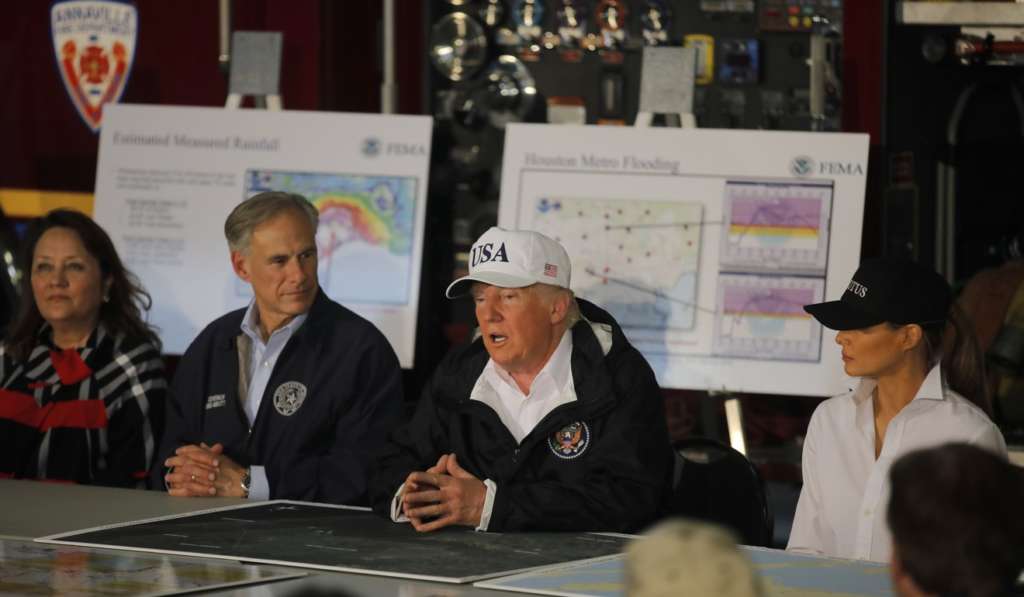President Donald Trump visited the Harvey disaster zone in Texas on Tuesday to survey damage from the first major natural disaster to test his leadership in a crisis, as the battered US Gulf Coast girded for another hit from the huge storm.
Trump, speaking in Corpus Christi near where Harvey first came ashore last week as the most powerful hurricane to strike Texas in more than 50 years, called for an exemplary relief effort.
“This was of epic proportion. Nobody’s ever seen anything like this,” Trump said of Tropical Storm Harvey, as he met state and federal officials for a briefing.
The president, sporting a “USA” baseball cap and clutching a Texas flag with its trademark lone star, said he was pleased with the response, but it was too soon for a victory lap.
“We won’t say congratulations,” he said. “We don’t want to do that…We’ll congratulate each other when it’s all finished.”
Trump spoke as emergency crews still struggled to reach hundreds of stranded people in a massive round-the-clock rescue operation.
Rain and more rain kept falling, with no sign of the nightmare easing. Houston Mayor Sylvester Turner declared a nighttime curfew as the city tries to head off looting in the wake of epic flooding from Harvey.
The White House announced that Trump already plans to go back to Texas on Saturday — a surprisingly quick return to a disaster zone for a US president.
Harvey, now a tropical storm, has so far driven more than 8,000 people into emergency shelters across the Lone Star State, and hundreds more still await rescue.
The National Weather Service tweeted that Harvey appears to have broken a US record for most rain from a single tropical cyclone, with nearly 52 inches (132 centimeters) recorded in the town of Cedar Bayou.
“The single greatest threat continues to be the rainfall,” said Dennis Feltgen, a spokesman for the Miami-based National Hurricane Center.
“This is not over.”
